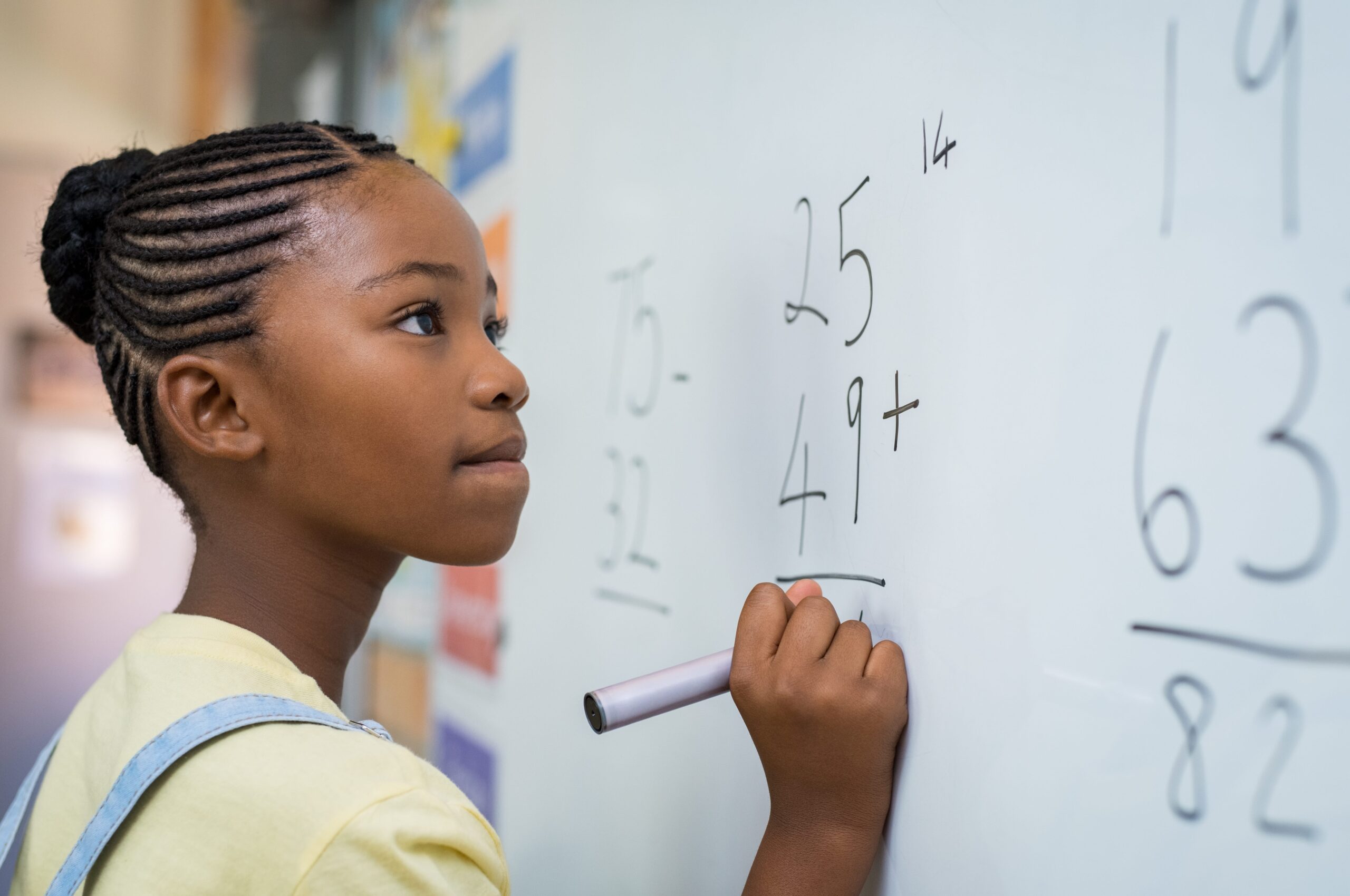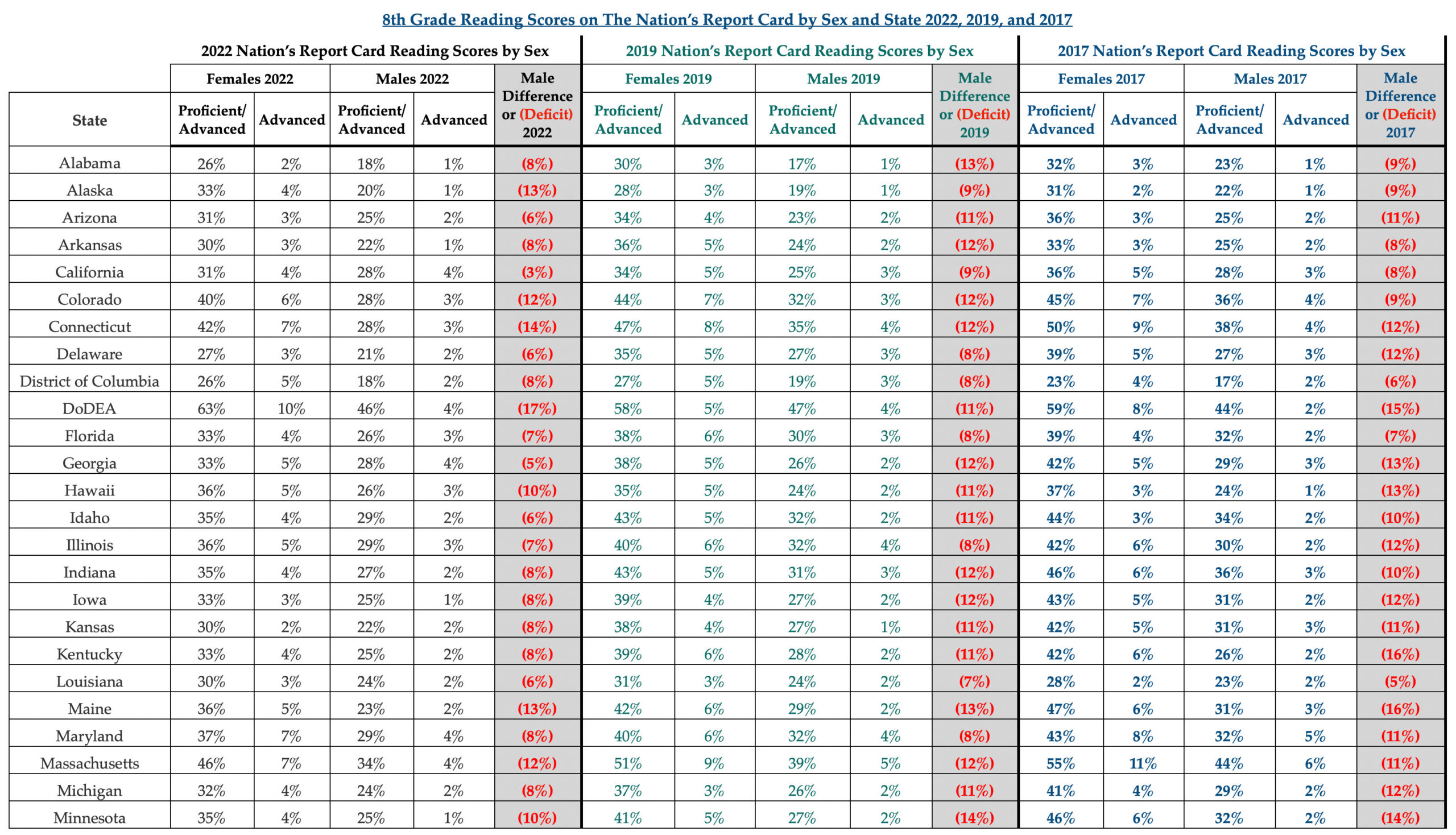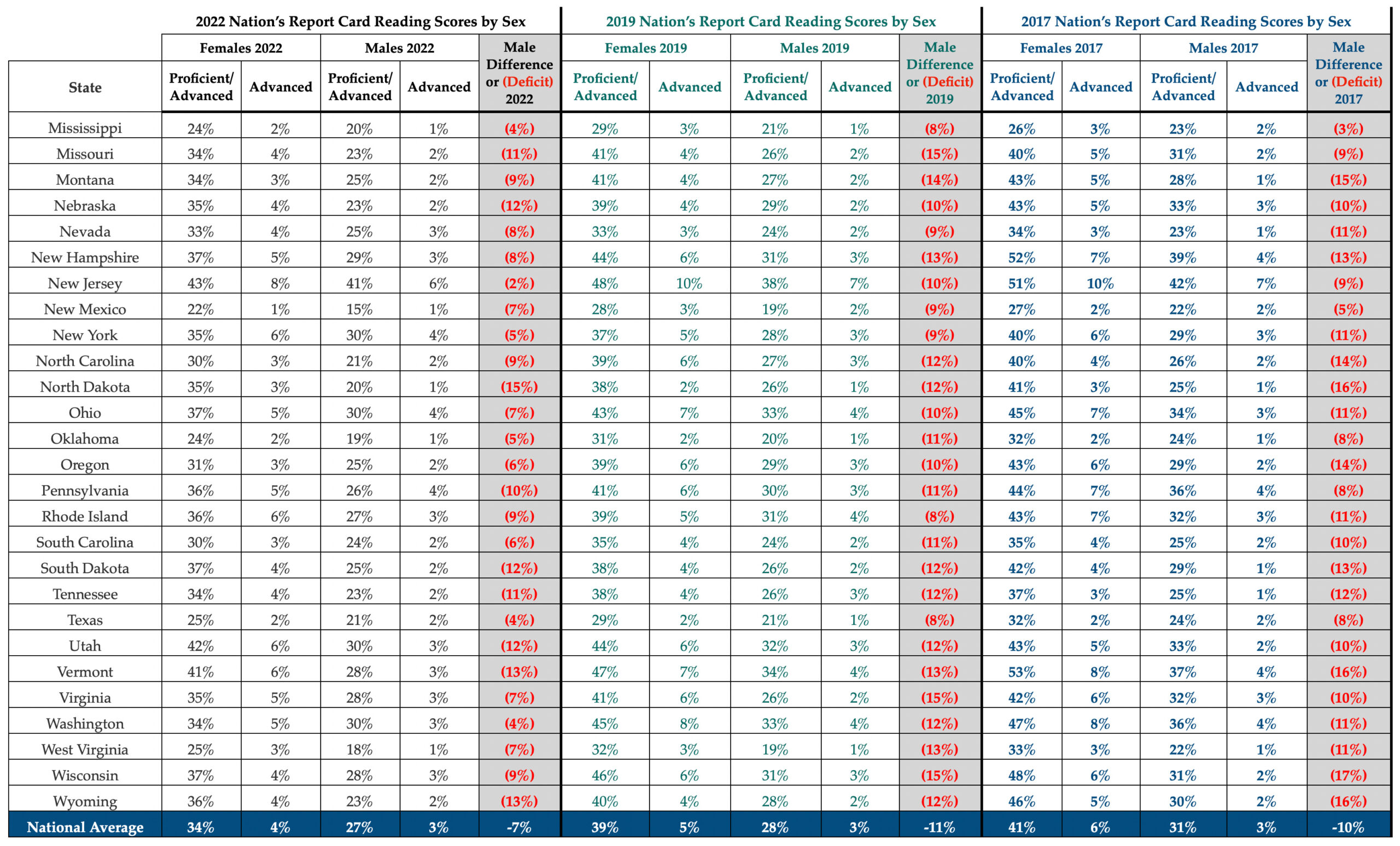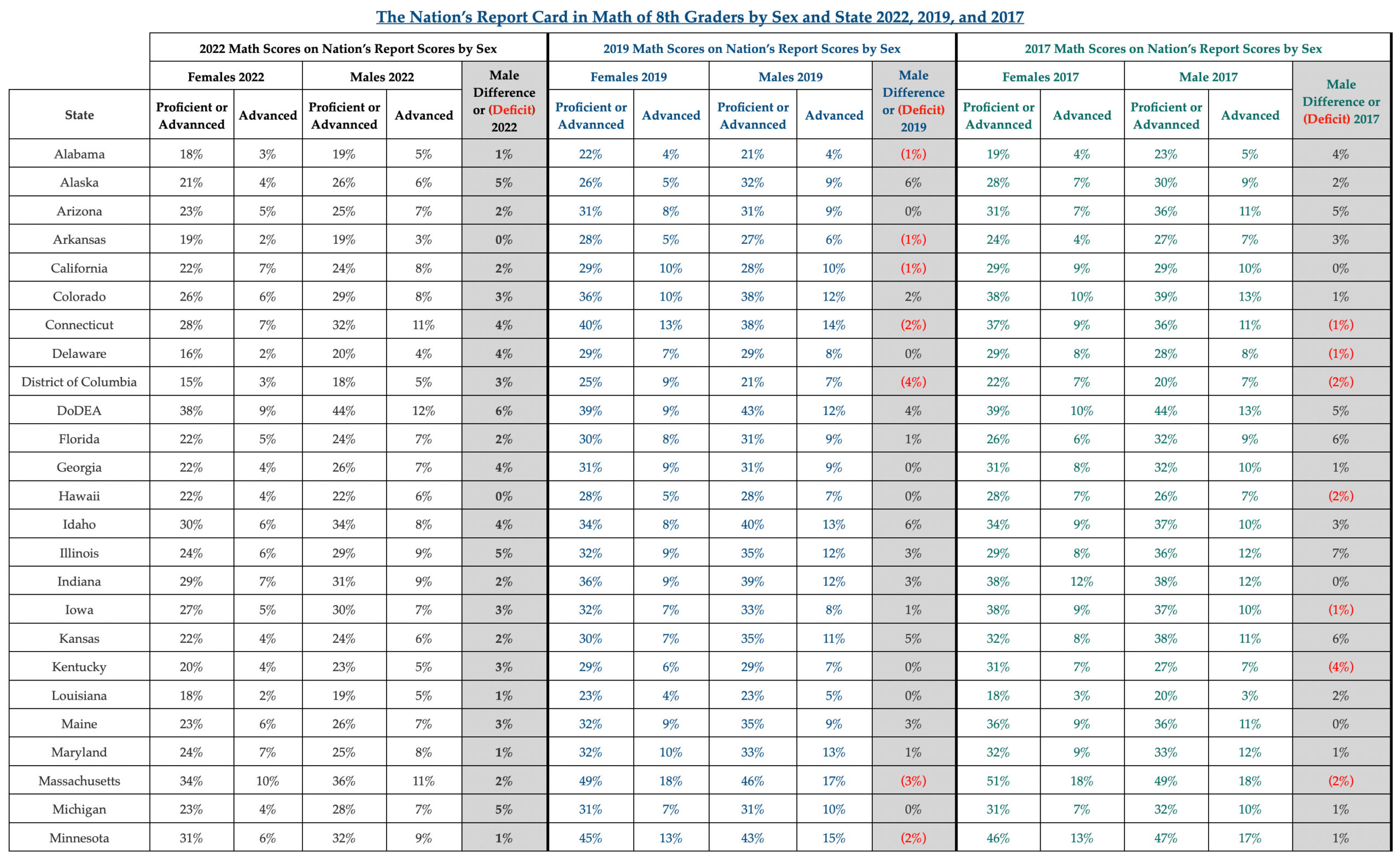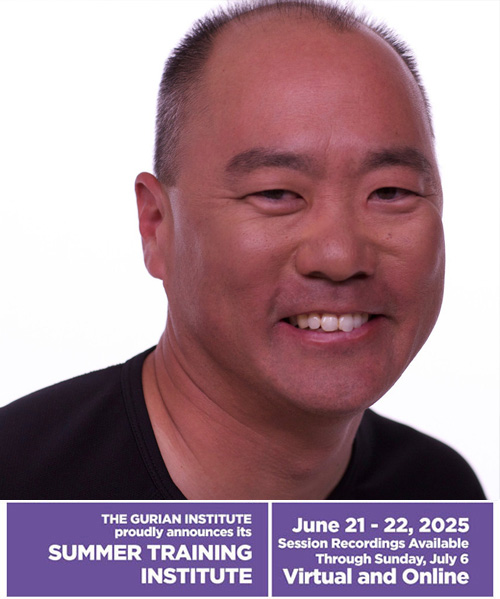Sean Kullman will be a keynote speaker at our Summer Training Institute in June. We hope you will find his guest blog post as fascinating and powerful as we do.
To learn more about the Summer Training Institute and to register individuals, please visit: https://gurianinstitute.com/events/gurian-summer-institute-2024/. If you can bring groups of five or more, please email us at info@gurianinstitute.com to get that set up.
“By virtually every measure, girls are thriving in school; it is boys who are the second sex,” said Christina Hoff Sommers (author of the War Against Boys) in an Atlantic article back in 2000.
And by nearly every measure, much has not changed since 2000. If anything, the conditions have worsened for boys, and data from the Nation’s Report Card (NAEP) and the growing Male Gender-Gap in college may reveal just how true that statement was then and now. This observation does not mean girls do not have their own struggles, as national data shows too few boys and girls are proficient in reading and math in 8th grade.
But after looking at the scores of 8th grade students who were proficient and advanced in reading and math, it was clear that girls are doing considerably better than boys overall. The percentage of girls scoring proficient and advanced in reading post-COVID (34%) was still higher than boys pre-COVID (28%) and post-COVID (27%) nationally. Prior to the pandemic, 39% of girls were proficient or advanced in reading, an 11% reading gap for boys.
Although the girls reading scores dropped more than boys from 2019 to 2022, there scores were still higher, as boys fared worse in reading than girls by significant and extreme margins. And when it comes to math scores, there is essentially no difference in boys’ and girls’ outcomes.
America’s reading gap
To help us better understand the data, the newly formed American Institute for Responsible Research (AIRR) created categories that show the number of states where boys and girls are equal to, behind, or ahead of each other in reading and math. The measures look at all states in the country as well as the District of Columbia and the DoDEA (Department of Defense Education Activity).
AIRR used percent differences to determine whether the gaps between boys and girls in reading and math were essentially the same, moderately different, significantly different, or extremely different.
- From 0-3 percent behind was considered essentially the same.
- From 4-6 percent behind was considered moderately different.
- From 7-9 percent behind was considered significantly different.
- From 10+ percent behind was considered extremely different.
In Washington State in 2019, for instance, 45% of 8th grade girls were proficient and advanced in reading compared to 33% of boys. That 12% difference is listed as being “Extremely Behind Girls.”

- In 2017, boys where “Significantly Behind” or “Extremely Behind” girls in 47 states and the DoDEA in reading.
- In 2019, boys where “Significantly Behind” or “Extremely Behind” girls in 50 states, the District of Columbia, and the DoDEA in reading.
- In 2022, boys where “Significantly Behind” or “Extremely Behind” girls in 36 states, the District of Columbia, and DoDEA.
- DoDEA student outcomes were consistently higher, by significant margins, for boys and girls in reading and math than any state and the District of Columbia.
In 2019, boys were significantly behind girls or extremely behind girls in reading in 50 states, the District of Columbia, and the DoDEA.
Although results from the 2022 NAEP might suggest the reading gap closed, that would be an inaccurate way to assess the data. The gap did not close, reading scores worsened generally for students but boys still fared much worse than girls nationwide in reading.
Is there a math gap?
When it comes to math, boys’ and girls’ proficiencies are essentially the same in the majority of states. In 2017 and 2019, the math proficiencies of girls were essentially the same as boys in forty-three states and forty-four states respectively and moderately different in 7 states and 6 states respectively, including the District of Columbia and DoDEA.

Understanding the nuances of the data is an important component, something National Public Radio (NPR) casually brushes over in its reporting of the NAEP results in 2023. According to an NPR report, “the math results…showed widening gaps based on gender and race. Scores decreased by 11 points for female students over 2020 results, compared with a 7-point decrease for male students” (NPR).
Although technically true, NPR looked at the average result of hundreds of thousands of students scores and compared boys to girls. This approach conflates the data in a way that does not focus on the essential outcome measure, the percent of students scoring proficient and advanced. NPR misses the most significant measure. What percent of boys and girls scored proficient and advanced? The scores were relatively low for both boys (28%) and girls (25%) in math in 2022. In 2019, nationally, boys were 34% proficient and advanced in math compared to 33% of girls.
The drop from 2019 to 2022 in girls’ math scores might suggest, as does reading, that schools seem better at educating girls than they are at educating boys when school is in session, as math gaps are essentially non-existent and reading gaps are largest for boys, according to data from 2017 and 2019 test (see appendix of tables).
schools seem better at educating girls than they are at educating boys when school is in session
Even using NPR’s own criteria, the average scores from 2022 showed that the reading scores between boys (251) and girls (261) was larger than the math scores between boys (274) and girls (267). The reading gap is 10 points compared to the math gap of 7 points. This data did not appear anywhere in Sequoia Carrillo’s NPR article and speaks to a generalized way institutions selectively focus on outcomes that address the issues of girls more so than boys.
How should NAEP data be reported?
Presenting the percent of students who score proficient/advanced at the state and national level (as well as the number of states in particular measures) is a better way to understand outcomes in a comparative way to see if there are gender differences.
Focusing on actual achievement (percent of boys and girls proficient and/or advanced) is far more important than average score differences of all students. In 2019, 28% of boys and 39% of girls were proficient or advanced in reading, compared to 34% of boys and 33% of girls who were proficient or advanced in math. The above approach gives us a far better sense of student outcomes nationally, instead of looking at the average test scores of hundreds of thousands of students and comparing those averages.
AIRR is now presenting the data in a way that looks at NAEP results in terms of proficiency outcomes in a variety of states.
In 2019, there were fifteen states where fewer than 25-percent of boys were proficient in reading. This scenario was not the case for girls in any state in the country, as all states reported higher reading proficiencies for girls. The tables below provide a clearer picture of the large reading gap that exists for boys as well as the math proficiencies that are essentially the same in states across the country.

There were only three states where 36% or more boys were proficient and advanced in reading, compared to thirty-seven states where this was the case for girls.
When it came to math, there were seven states where 25% or fewer boys and girls were proficient and advanced. There were nineteen states where 36% or more of boys were proficient and advanced in math compared to 20 states where this was the case for girls, so essentially the same.
Reading is, unequivocally, the largest educational gap our nation faces, as boys are behind girls in essentially every state in the country by significant and extreme margins when it comes to being proficient or advanced (see tables in appendix).
Focusing on raising the number of students who score proficient and advanced should be a core goal. States should consider using the Nation’s Report Card (NAEP) as their official state assessment tool for fourth and eighth grades to help provide a more robust sample size and identify the challenges facing, not only boys and girls in their individual states, but boys and girls across the country. Using one uniformed test may actually help states compare schools to one another across the country.
And, using AIRR’s new presentation style of the data will help give a better sense of student outcomes. AIRR is also encouraging NAEP to disaggregate the data by both race and sex, something Global Initiative for Boys and Men has done in various state reports across the country.



